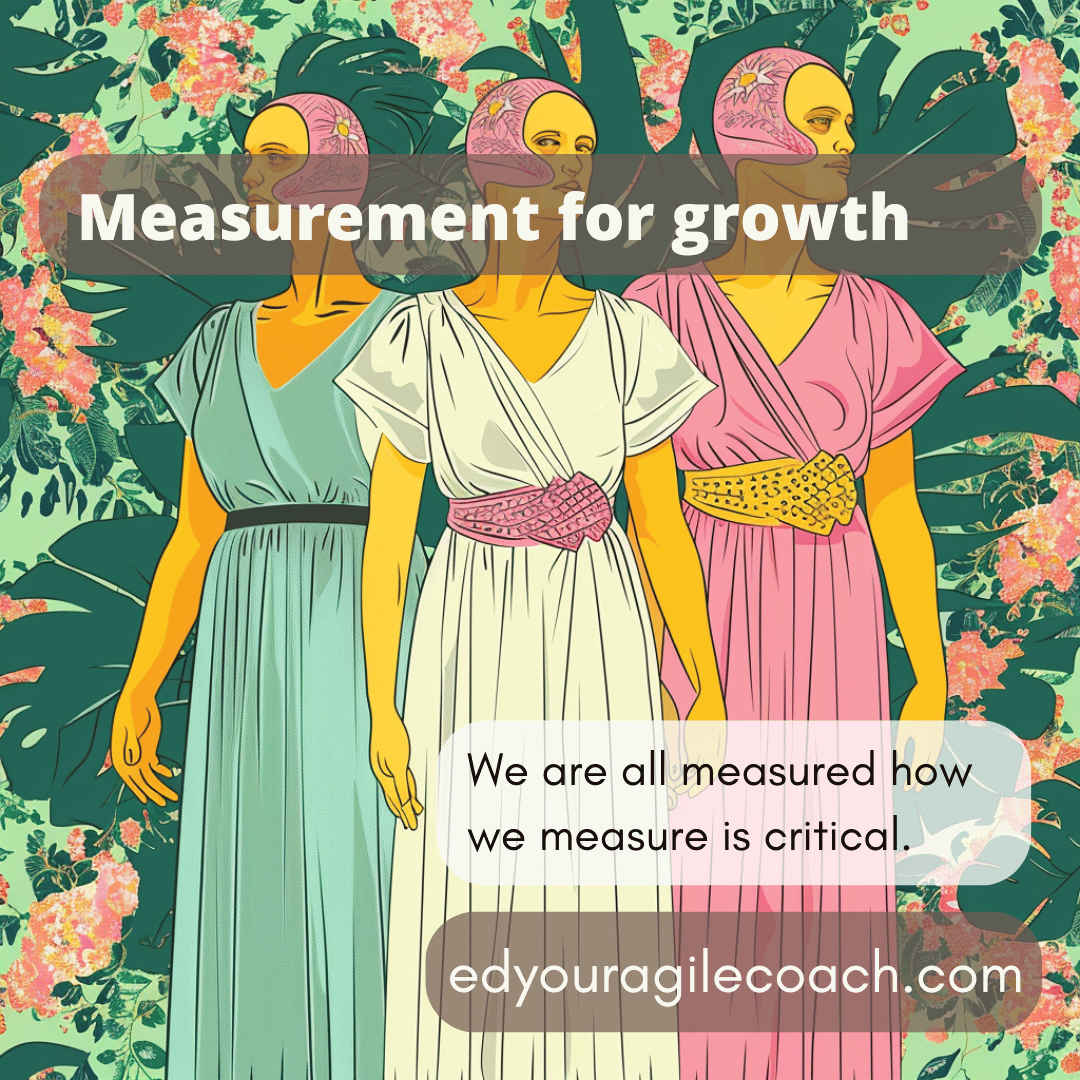I am using measurement for growth instead of evil.

The business world is strange. Buying, selling, and creating goods and services is difficult to explain daily to uninvolved people. Working in technology, finance, or professional services is more perplexing. Everyone understands what a firefighter does, but a software architect often receives puzzled looks from bystanders when they explain what they do. This is why businesspeople usually use stories and metaphors to explain their business or working environment. This is why many organizations use terms like family, tribe, mission, and commitment to describe themselves. Whenever I hear these phrases kicked around, I resist the urge to cynically chuckle because, despite our best intentions, humans can be selfish creatures, particularly in struggling business environments.
During difficult times, I have witnessed mild-mannered businesspeople behave callously toward each other. One reason this happens is the misuse of metrics and measurement. Today, I would like to discuss using metrics as a source of growth instead of cruelty.
One of the central tenets of global business is that we measure success regularly. The stock market expects quarterly reports explaining the money earned and lost at each company trading on the exchange. Profitable companies are also likely to pay a dividend, the amount you receive for each share of stock you own. For instance, the International Paper Company sells for between thirty and forty-five dollars a share on the stock market, and each share you own will pay you approximately forty-five cents. It does not look like much, but those pennies quickly add up if you are a wealthy investor or a pension plan with thousands of shares. Suppose you work at a publicly traded company. In that case, your mission is to improve profitability so that you can offer more dividends to your investors, which will drive more people to purchase your shares and create more money for your organization. Once you understand this dynamic, it explains why senior business leaders are laser-focused on profits and dividends.
What gets lost in the conversation is that the workers of these companies create profits and dividends. Just like business owners and executives, they are measured constantly for efficiency and effectiveness. It is thinking that dates back to the early twentieth century, and it is the work of engineer Frederick Winston Taylor. Taylor measured everything from how quickly a clerical worker typed up a memo to how many items came off a manufacturing line. It revolutionized business, but it came with a price. Taylor's methods treated human beings with the same indifference as machines, so factories and offices began to ignore human concerns. Efficiency meant specialization and monotony for workers who suffered from alienation and repetitive injuries from work. A long chain of specialized people without overall ownership of the process also amplified minor errors. These errors snowballed as they were passed from one person to the next.
Taylorism was also bad at creative work and the knowledge economy. How can you measure the efficiency of a film editor or an advertising copywriter? All you can do is measure the value created by these people when they finish their work. For managers raised on measuring the speed of goods made on a factory floor, it generated anxiety. If they could not see or measure the work, how could they know they were doing the things that generated profits?
I suspect that the inability to track how effectively people work drives some of the demand for workers to return to the office. It has also spawned an entire measurement industry within the business community. Data is collected on numerous metrics and used to determine the efficiency of groups of people. As office workers become aware of this measurement, they manipulate efforts to improve the measurement statistics instead of actual service or value to paying customers.
A classic example is in telephone call centers, where people are measured by how many calls they complete in a shift. It incentivizes fixing easy problems and ignoring more gnarly issues because bonuses and promotions depend on keeping the call volume high. The phenomenon is known as Goodheart's law, which states, "When a measure becomes a target, it ceases to be a good measure." Eventually, an organization becomes a contraption of competing metrics and perverse incentives.
It takes thoughtful and conscientious people to track metrics and measurements, which avoids the perils of Goodheart's law. Promotions in organizations sometimes prioritize the ability to enforce procedures or manage relationships with superiors. This focus can lead to measurement and metrics being used for performance evaluation rather than identifying improvement areas.
As a leader, the temptation to measure bugs, test coverage, and other metrics to track team efficiency will crop up. Once the team figures that out, they will manipulate these metrics and make them worthless. Thus, you must measure things that value the organization and the team. How much revenue does the new feature generate? Is the time to market faster or slower? Are people taking more sick leave because they are working long hours? Answering those questions will make you better than most business leaders.
Measurement itself is not evil, but like most things in contemporary society, how you use something determines its ethical value. When used as a weapon to oppress or intimidate, it will undermine an organization. If used to track trends and improve, it will create a virtuous cycle. Each of us must choose wisely.
Until next time.




Comments ()